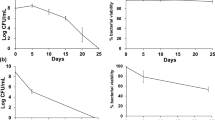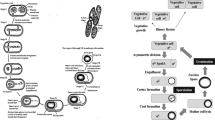Pyocyanin, a potential antimicrobial agent, was secreted by Xanthomonas campestris. Treatments with agents causing oxidative stress in the organism caused up to 4.4-fold increase in pyocyanin production. Pyocyanin added in the extracellular space did not affect growth rate of X. campestris, but decreased maximum cell concentration and specific product formation. However, the growth of Escherichia coli, the indicator target organism, was affected by pyocyanin. There was also a significant increase in the intracellular reactive oxygen species (ROS) concentration and antioxidant enzyme [catalase, superoxide dismutase (SOD)] concentrations, in the presence of pyocyanin. The intracellular ROS concentrations in E. coli formed upon exposure to pyocyanin, which is an indicator of the toxicity, was dependent on the growth phase of the organism. Studies with mutants of E. coli showed that intracellular ROS concentration was not significantly affected by the absence of the regulon OxyR, but, was significantly higher in cases when the regulon rpoS or the genes katG or katE were absent. Journal of Industrial Microbiology & Biotechnology (2000) 25, 266–272.
Similar content being viewed by others
Author information
Authors and Affiliations
Additional information
Received 08 May 2000/ Accepted in revised form 04 August 2000
Rights and permissions
About this article
Cite this article
Rao, Y., Sureshkumar, G. Oxidative-stress-induced production of pyocyanin by Xanthomonas campestris and its effect on the indicator target organism, Escherichia coli . J Ind Microbiol Biotech 25, 266–272 (2000). https://doi.org/10.1038/sj.jim.7000067
Issue Date:
DOI: https://doi.org/10.1038/sj.jim.7000067




